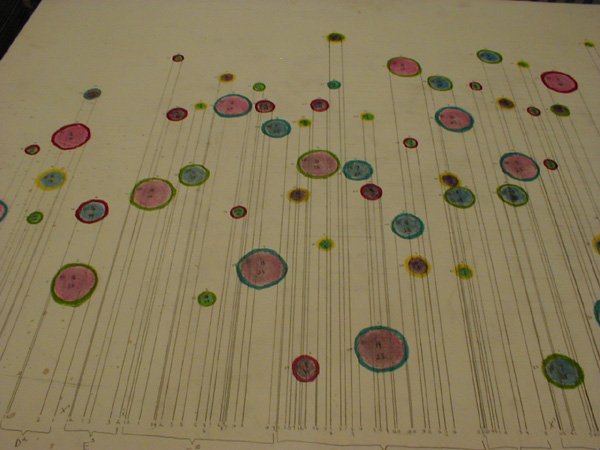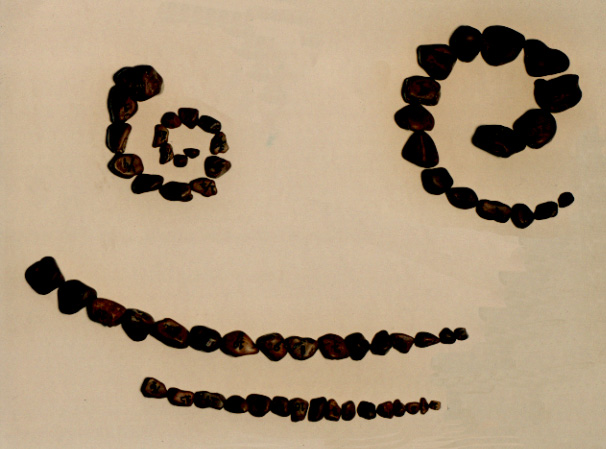Great River
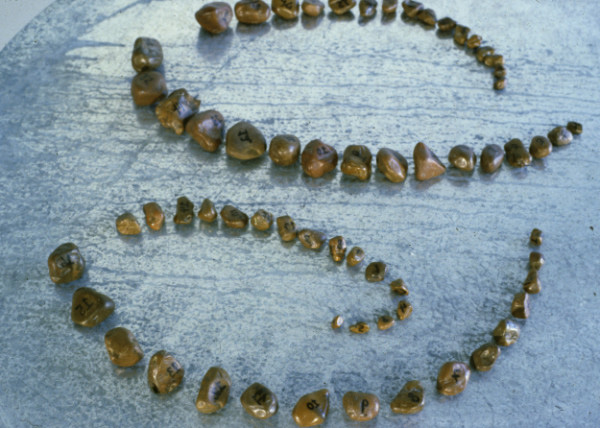
Great River
Returning to the United States at 27 years of age with a new life partner Elke Weber; soon to be Elke Lesso and mother of my son Karsten - our first sight was of an Armada traveling the Hudson River on the 4th of July 1976. Then later in Pittsburgh, home for the next three months, one of our day journeys led us to walking along the Allegheny River - the southern bank east of Pittsburgh. There we noticed a slue of pollished and smooth cocoa brown stones, just west of Lock Number 2. These stones maintained a size consistency at no larger than an apricot, to stones the size of a pea. We collected more than a thousand stones at our apartment in East Liberty. A great river indeed to have pollished this swath of stone.
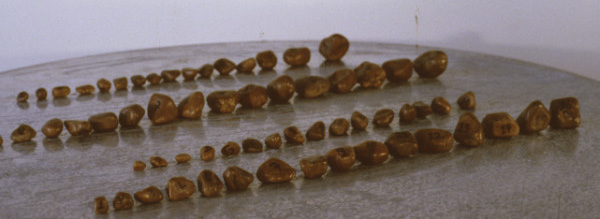
Weighing the largest and snailest stones two fundamentals emerged, 0.5 grams and 44 grams. Then I began searching for harnonic series steps by weight and found the 44g stone produced the best result because it was, after all, the largest stone. With the 0.5g stone set at 1, then adding two fundamentals at multiples of 3 and 5, now the set of fundamental stones was four, 0.5g 1.5g 2.5g 44g. Four harmonic necklaces marked with their series identifier and harmonic numbers. The 44g stone develops in a harmonic series that divides in half, in thirds and down to sixteenths. Each of the smaller stones steps to an arithmetic series from 1 to 16. This set of four describes three overtone rows and one undertone row, three are major scale oriented and one has a minor scale orientation. This arrangement of stones starting with the smallest stone contains the overtone row from 1 to 16. The undertone row from 1 to 1/16 is set for the largest stone, four sets of sixteen stones, sixty-four stones, sixty-four tones.
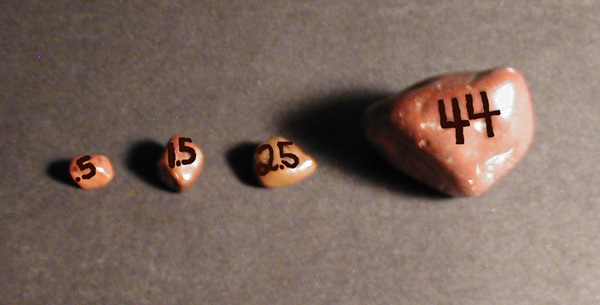
All of the stones gathered were not used and there were buckets of them. They perhaps remain there still directly outside our once occupied East Liberty apartment. Where they were poured at the base of a rainspout, near the front of the house, to fill a small canyon of erosion created during a series of great Pennsylvania downpours that summer.
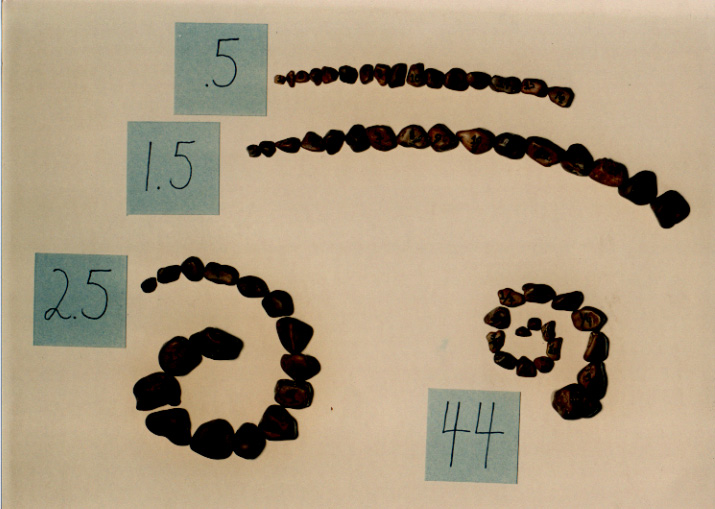
For the next 10 years I used the singing stones as silent instruments. They describe a very personal music for the eye and the ear that I call AImost Music. Performances are executed in complete silence while being particularly observant for partial tone durations and combinations and focusing on the stones alignment after a toss of four or more.
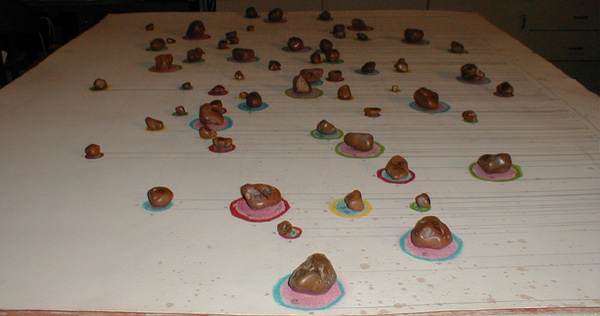
In spring 1987 I separated the stones geometrically according to size into four new groups, then tossed them all onto a large piece of paperboard. I would have to pick up all of the stones and arrange to toss them three times before all had landed within the 40"x32" paperboard. Drawing a circle around the spot where each stone landed, carefully color coding by size-group, weight and series produced a colorful index of the toss.
Durations now set for the four size groups at 24 seconds, 14.25 seconds, 8.5 seconds and 6.5 seconds. The position of a stone on the paperboard determined its placement in musical time and its weight determined a tonal value. A transcription to standard musical notation served as a steptime input to a sequencer for playback. I chose C for the fundamental of the 5 gram stone and the other fundamentals followed as G, E, and F#. Although microtonality is here prescribed a well-tempered tuning was used throughout pending the availability of great sounding and easily tunable instruments.
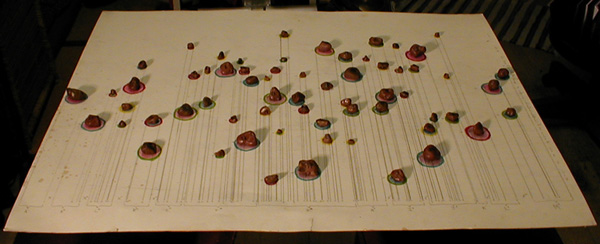
I assembled four scores for the live performance. These scores are based upon tonal values for the horizontal overlap of stones. The scores are prepared in whole note values to allow the performers a rhythmic improvisation to accompany the strings of the loaded sequencer tracks.
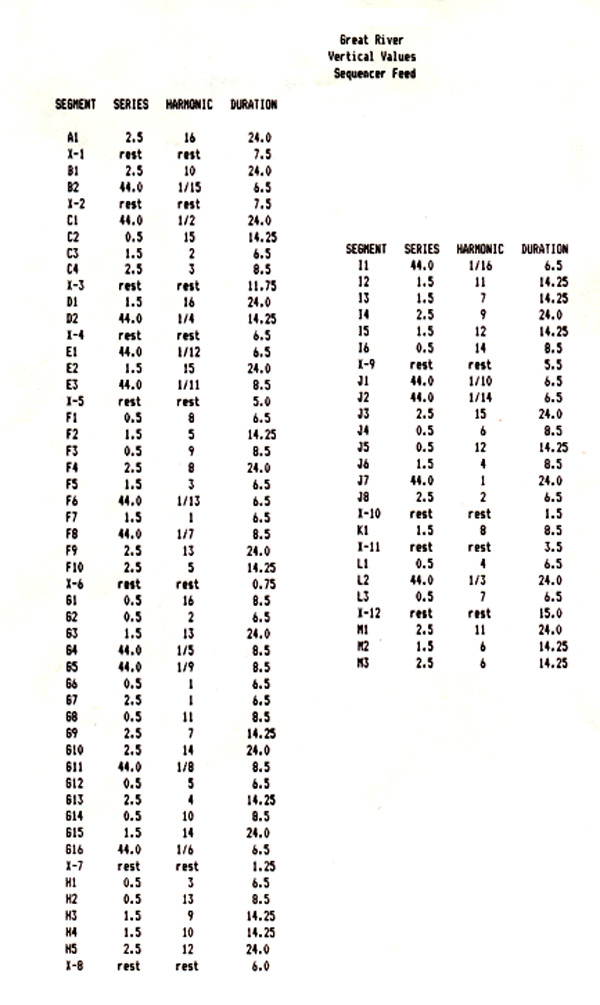
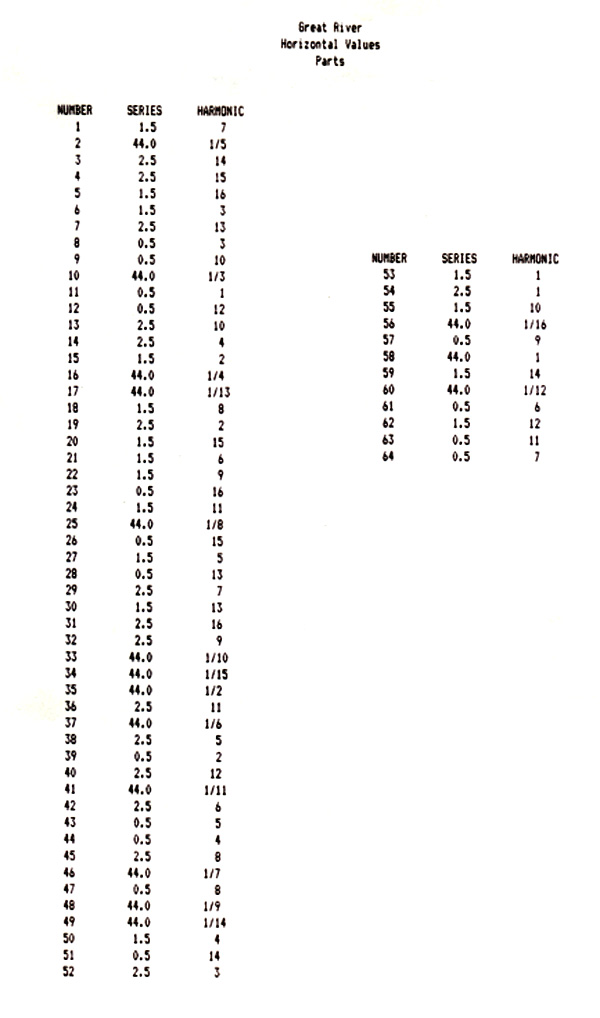
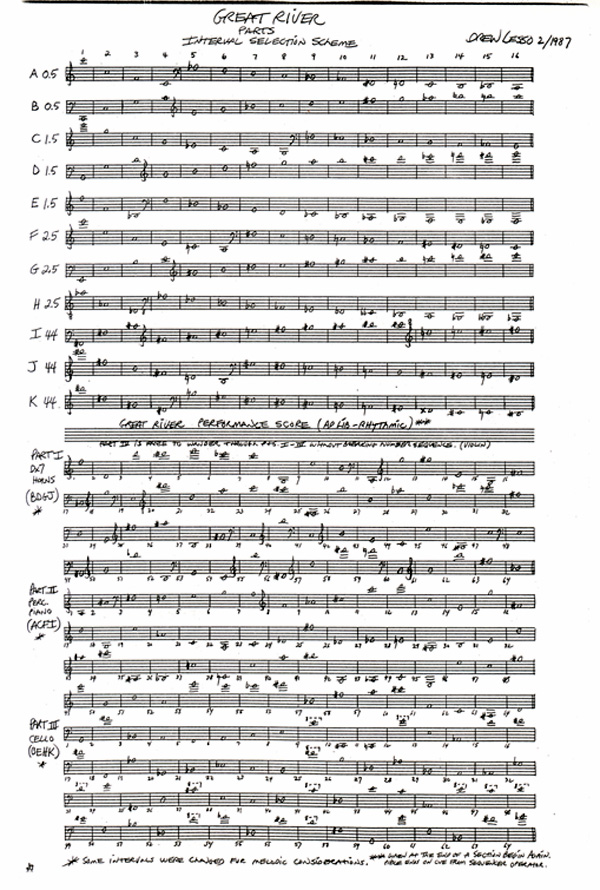
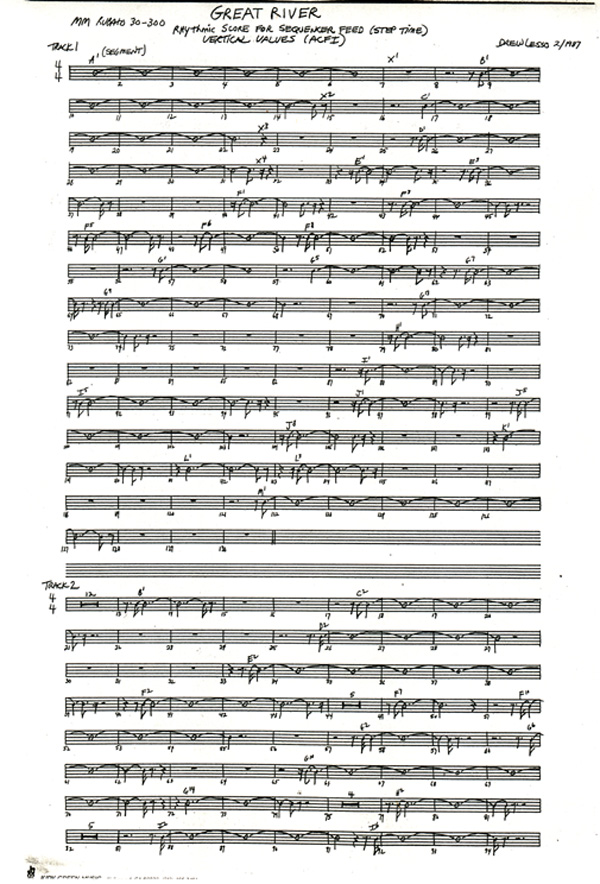
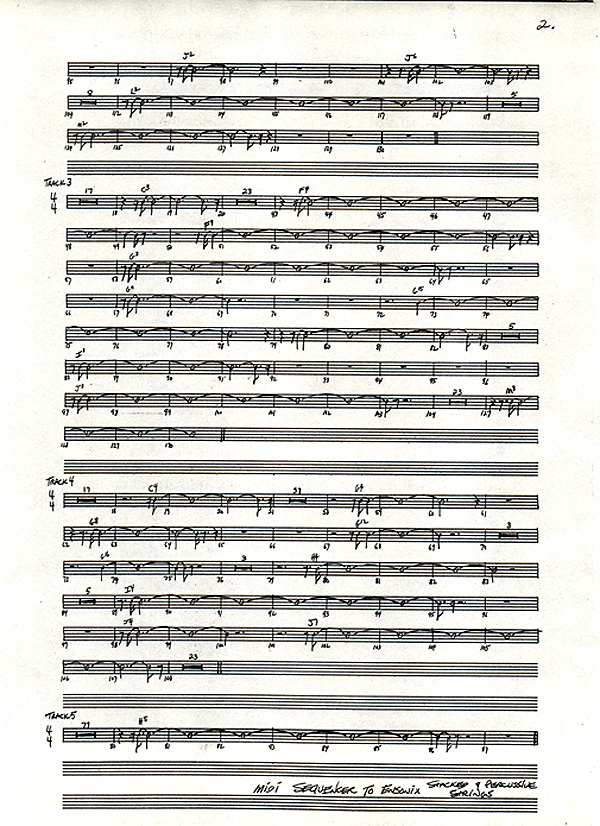
Great River was performed early in the Spring of 1987 at the Park Plaza Hotel in Los Angeles with Dick Dunlap playing an Ensoniq Mirage percussive piano and mixing the performance through two Yanaha SPX-90 processors. Hans Reumschuessel played processed cello and Tony Selvage played electric violin. Drew Lesso played DX7 horns and a Yanaha QX5 sequencer at various tempos, triggering stacked and percussive sampled strings. The same setup was performed at the Cologne Philharmonic by Ensemble Köln in 1988 as part of the International Computer Music Conference.
